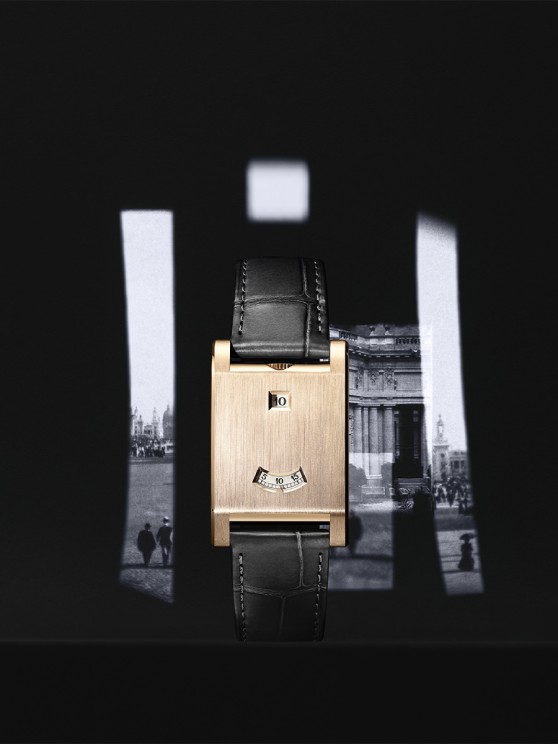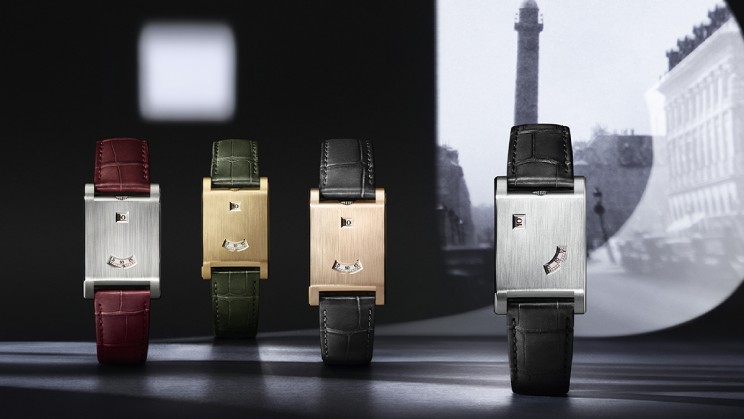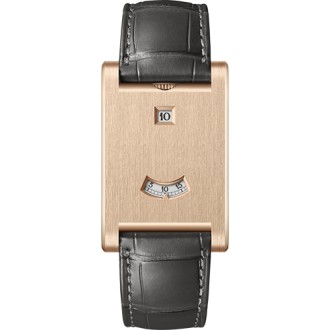Magic flows through Cartier’s creative spirit. Like a guiding thread, it combines with audacity to enhance the watchmaking designs of the Maison. This dynamic transformation is captured in the latest Cartier Privé edition with the Tank à Guichets watch.
Each year, this singular collection—beloved by watch enthusiasts—reveals a new interpretation of one of the Maison’s iconic timepieces. Following in the footsteps of the Tonneau, Tank Normale, and Tortue, Cartier Privé presents a new way of reading time. First introduced in 1928, the Tank à Guichets combines technology and design to offer a digital time display.
“Six years after the debut of the Tank Louis Cartier, Louis Cartier took his quest for simplicity even further with the Tank à Guichets. Time is revealed solely through two minimal openings, with the traditional dial replaced by a streamlined, all-gold case defined by clean lines and perfect proportions. A jumping hour mechanism and a dragging minute display embody Cartier’s commitment to refined watchmaking, where technical mastery always serves aesthetic excellence.”
Pierre Rainero, image, style and heritage director at Cartier

A brief history of the Tank
The first drawings of the Tank watch appeared in 1917, with a sleek case aligned with the strap, parallel brancards and a winding crown at 3 o’clock. Though the watch wasn’t officially released until 1919, this original “mother idea,” initially called the “Tank Normale,” has inspired countless variations ever since. It represents the pinnacle of Louis Cartier’s design philosophy—a perfect blend of style and function.
In 1928, with the rise of trains and cars, speed became an everyday reality. Time needed to be read quickly, easily, and at a glance. Cartier responded to this shift with a watch designed for modern demands. By removing the hands, the watch displayed the time through two apertures: one for the hours and one for the minutes. This Tank model, said to be the first to be equipped with a complication, embodied modernity through its design.
Throughout the 1930s, Cartier created several Tank à Guichets models, all of which were unique. These watches explored various design elements, from the shape of the apertures to the integration of the brancards with the case, the placement of the crown, and the choice of materials. In 1997, to celebrate Cartier’s 150th anniversary, a platinum version was released in a limited edition of 150 pieces. In 2005, the Tank à Guichets returned as part of the Collection Privée Cartier Paris, with a limited series of 100 pieces in rose gold.
The Tank à Guichets from the Cartier private collection
The new Tank à Guichets watch is powered by the hand-wound 9755 MC movement, a calibre with jumping hours and dragging minutes, crafted exclusively for this timepiece. Like the original, the winding crown is positioned at 12 o’clock. The satin-finish case contrasts with the polished horizontal brancards, enhancing the watch’s silhouette. The central face is in brushed gold or platinum.

This new interpretation offers two distinct styles. The first model revisits the 1928 design, with the hour aperture at 12 o’clock and the minute aperture at 6 o’clock. This version is available in yellow gold, rose gold, or platinum.
The second platinum model, limited to a numbered edition of 200 pieces, features the two apertures positioned at an angle. This design element pays tribute to the 1930s, a period of rich creativity and aesthetic innovation.









